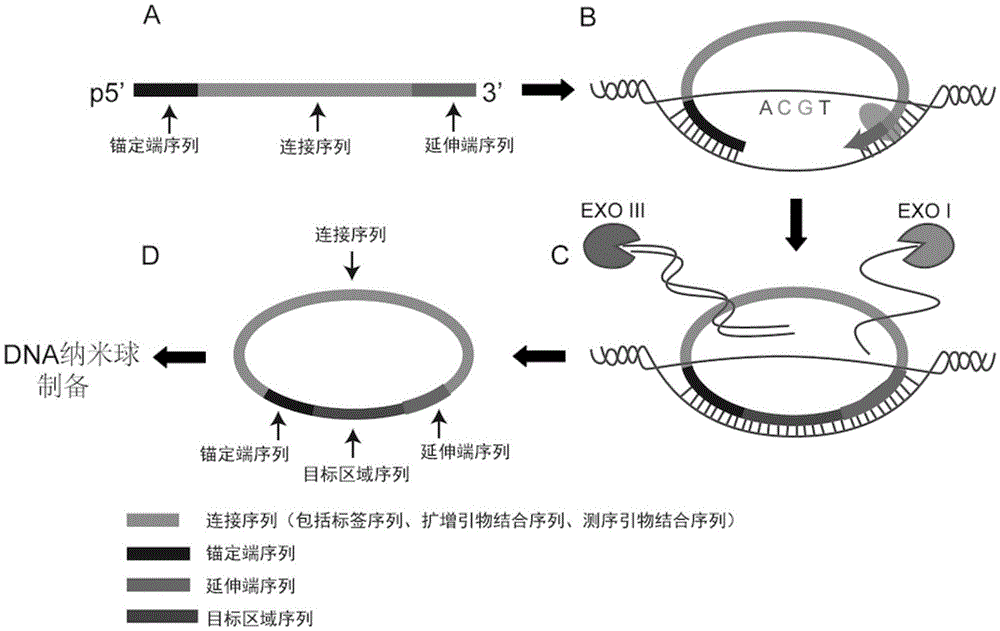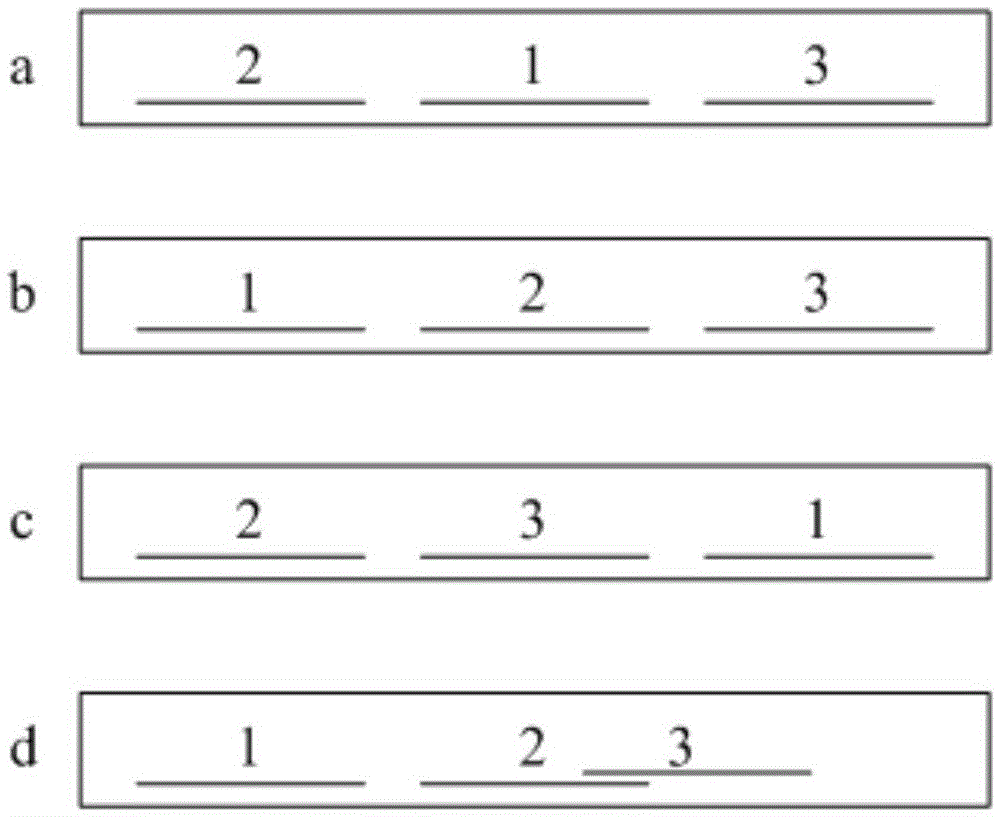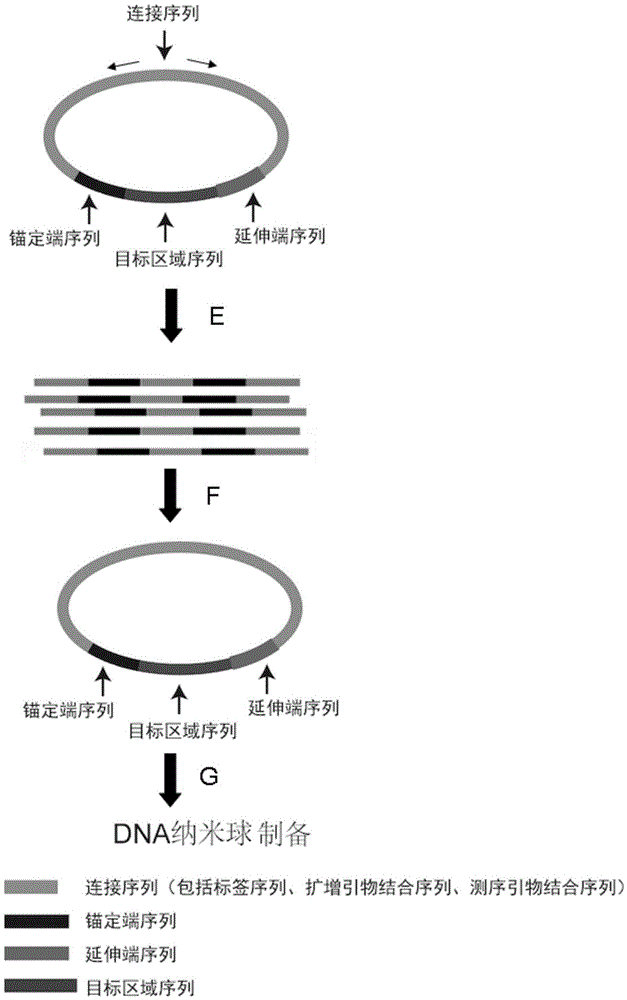Sequencing library building method and reagent based on molecular inverse probe
A molecular reverse probe and sequencing library technology, applied in the field of molecular biology, can solve the problems of time-consuming single-stranded circular library construction, complex enrichment of target regions, and cost-consuming problems, achieving low initial volume and reducing errors , the effect of simple process
- Summary
- Abstract
- Description
- Claims
- Application Information
AI Technical Summary
Problems solved by technology
Method used
Image
Examples
Embodiment 1
[0074] In this embodiment, the genomic DNA (gDNA) of Yanhuang (YH) is used as the experimental material, and a certain site of deafness gene detection is taken as an example.
[0075] The detection sites and nearby sequences are as follows, where underlined bold italics is the site to be detected; the underlined sequence is the sequence at both ends of the target region, which specifically binds to the anchor sequence and extension sequence of the molecular reverse probe.
[0076] 5'-AGGATCGTTGTCATCCAGTCtcttccttagga attcattgcctttggg atcagc acatcttctcaggattcttctcttgttttgtg gccaccactgctctttc ccgcacggccgtccaggagagcactggaggaaagacaCAGGTAGGAACAACAGCCTT-3' (SEQ ID NO: 6).
[0077] According to the above detection sites and nearby sequences, the following molecular reverse probe sequences were designed, in which the underlined sequences were the anchor sequence and extension sequence of the molecular reverse probe.
[0078] 5'-pho_CCCAAAGGCAATGAAT AGGTATCTCAGTTCGGTGTAGGTCGTT...
Embodiment 2
[0098] In this embodiment, human peripheral blood DNA (300ng) is used as the experimental material, and the probe regions are seven regions on the congenital deafness gene 12S-rRNA, GJB2, GJB3, and SLC26A4. The probe site information is shown in Table 3. The CompleteGenomics platform was used as the sequencing platform, and the SE50 sequencing type was adopted.
[0099] table 3
[0100]
[0101]
[0102] The experimental process is as follows:
[0103] 1. MIP hybridization
[0104] The enzyme reaction system is shown in Table 4, wherein the MIP probe is obtained by using the sequences of SEQ ID NO: 1-3 in the first method of the above-mentioned probe preparation.
[0105] Table 4
[0106] components
Dosage
5-300ng
MIP probe
1 fmol
Ampligase buffer
2μL
dNTP (10mM)
2μL
Ampligase
1μL
Phusion
0.5μL
water
Make up 20μL
[0107] Reaction program: 5 minutes at 95°C, 3...
PUM
 Login to View More
Login to View More Abstract
Description
Claims
Application Information
 Login to View More
Login to View More - R&D
- Intellectual Property
- Life Sciences
- Materials
- Tech Scout
- Unparalleled Data Quality
- Higher Quality Content
- 60% Fewer Hallucinations
Browse by: Latest US Patents, China's latest patents, Technical Efficacy Thesaurus, Application Domain, Technology Topic, Popular Technical Reports.
© 2025 PatSnap. All rights reserved.Legal|Privacy policy|Modern Slavery Act Transparency Statement|Sitemap|About US| Contact US: help@patsnap.com



